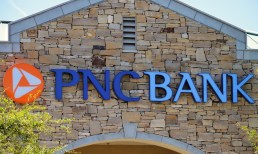Data: It’s everywhere and has value – but only if used correctly.
And Big Data, of the type we all read about, from ever-changing, disparate sources, is all around us, too. Perhaps a common misperception is that Big Data can be harnessed effectively only by the biggest financial institutions, who have the staffing and technological firepower in place to harness the information to be gleaned from the web and elsewhere, crafting an optimal customer experience.
Not so. Smaller firms, such as credit unions, can also harvest data to their own benefit.
In an interview with PYMNTS’ Karen Webster, Matthew Maguire, chief data officer at CO-OP Financial Services, said that machine learning and artificial intelligence can help speed the digital transformation of credit unions as they seek to cement relationships with customers or forge new ones.
Maguire joined CO-OP in 2017 after more than a decade at Bank of America, where he told Webster there are key similarities in what lies before the biggest of banks and financial institutions (FIs) within the credit union space.
Namely: “Data is coming in from different places, and the challenge is how do you accumulate [those data points] and make it all connect,” with an eye on completeness and usefulness to credit unions.
Advertisement: Scroll to Continue
Maguire offered the example of someone’s passport expiring – a data point that should get recognized across different parts of an organization, but doesn’t, as many departments do not communicate with one another. Because an FI’s business is so big, the firm interacts with clients on different products or actions and data is stored in multiple places, inefficiently siloed.
Information walls are up, but there is no continuum of access to that information – and asking at multiple touchpoints for the same bit of data results in a poor customer experience. This is a conundrum that can be easily avoided, Maguire told Webster, if the process is internally streamlined with the aid of data: “It is about connecting the dots.”
As for the dots (data dots?) themselves: Webster and Maguire discussed the core of data that is needed across departments, offering a foundation upon which layers can be built across an institution’s various services. Those core data pieces include a client’s name, address and other legal items, which the bank can then layer onto its anti-money laundering (AML) and Know Your Customer (KYC) processes, tied to bigger swaths of consumer data.
Using those data points as a springboard, he said, “you start adding on your product data, and then you start adding on your transaction data and adding on market data and all these complementary pieces that give you an … enriched view of that customer.” Layered together, this data gives light to patterns specific to that customer, he said, allowing credit unions to craft a better overall experience.
Webster noted that the above data collection also, of course, helps with authentication and compliance efforts, where the flip side of getting to know the customer better helps to satisfy regulatory issues. “You have to make sure the layers of security are associated with the data as much as the access to the data itself,” he said, of KYC and compliance.
As a result, credit unions feel more empowered to help the customer. “Sometimes when you have a tighter end-to-end capability, you can do more with less,” Maguire said. It also enables a faster turnaround on the information in terms of customer retention – seamlessly, across credit, debit and other services.
“Everybody’s got the data,” he said, “while the question is, what are you able to do with it?”




